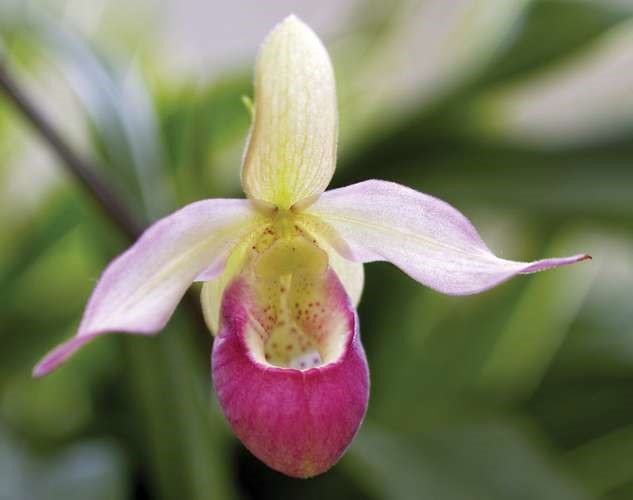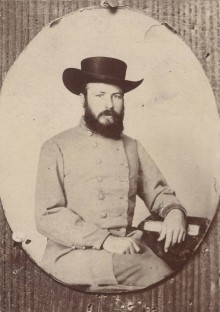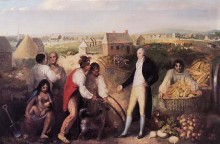Unemployed authors were employed through the Works Project Administration WPA to record the life and culture of Americans during the Great Depression era. Many were employed in Alabama. In 1937, this excerpt was part of an essay written about Alabama Folklore. The author stated this purpose in writing the essay at the end. The essay is long so it has been divided into several parts. Since it was written in the 1930s, it captures some of the language of the times so be forewarned that it might offend some readers.
Become an Alabama Pioneers Patron today and share your information through chats and comments with other Alabama Pioneers Patron members.
The simple tales that have colored existence for the generations also become fewer, unless captured and put on the printed page. The line of story tellers grows thin. Widespread education, new modes of thought and life are responsible for the passing.
To preserve these legends that are so essential a part of the history of the people, the chronicler must prepare his records with haste before the sources have dried.
Become an Alabama Pioneers Patron today and share your information through chats and comments with other Alabama Pioneers Patron members
Alabama Folklore Part I
The excerpts below have been transcribed from an Essay titled Alabama Folklore March 26, 1937, by J. Edward Rice, Pettersen Marzoni and rewritten by David Holt, Editorial Department, Federal Writers Project Dist. 2, WPA Project 3014, Identification No. 0149-17374
Alabama has not been the human melting pot that many other states have been, hence its growth of tradition has not been colored by the beliefs of varied nationalities…..This essay attempts to present the source and growth of such lore.
At times it is impossible to separate the white and Negro lore into separate classifications. This is due to two main facts; first both races in the early days of the state faced common obstacles in the clearing of the land and establishing the agricultural dynasty that ruled until comparatively recent years; second, the close association of the whites and blacks in older days, and still continuing to a large extent. From infancy to adolescence a majority of the whites were nurtured by Negro nurses who instilled in them the fancies, fears and fables inherited from African sources. The white man’s religion and particularly his hymns furnished the basis for the Negro spirituals, through which recurs the thought of blood sacrifice and some spectacular assent into heaven………
The State Name
Until recently it was generally accepted the word “Alabama” had derived directly from “Alibamo,” which was construed to mean “here we rest,” and was given legendary origin as the exclamation of a homeless and wandering party of Indians on beholding the Alabama river from Montgomery bluffs. (Objection to the implication of laziness, or a static condition, was behind the legislative attempt to change Alabama’s slogan from “Here we rest” to some phrase implying action.”
Much controversy has raged about the proper definition of the Indian word and certain savants agreed that the proper meaning is “To open or clear a thicket.”
Internal warfare of a tribe in the Southwest ended with a group of Indians setting out to find new hunting grounds and a permanent home. Each night the leader would set up a wand, stripped clear of its bark. In the morning the wand would be leaning toward the Northeast, so the wanderers would continue their journey.
This went on day after day, until one morning the wand was discovered to be standing upright.
“Alibamo, Alibamo,” cried the chieftain and his followers echoed his cry. So “alibamo” they named the land, as they set about clearing the thicket for a permanent village.
Natural or Supernatural manifestations, are the basis for most of the Indian legends handed down through the years……..
The relation of Indian folklore of Alabama to that of other sections even infringing somewhat on the Germanic fairy tales, is fully illustrated by the story of “The Lady Slipper,” a woodland flower. The legend of the flower will be found in various forms in several states, though none more poetic than the Alabama version.
Indian Cinderalla
Just as it was the tiny glass slipper of Cinderella that made Prince Charming pursue her to the wretched chimney side where she sat in ashes, so did the dainty moccasin of Papilla, bewitching maiden of the Creek nation, attract a hardy young brave who found it. The legend relates that in all the tribe of the Creeks there was no foot so small as that of Papilla, whose fame was widespread. So he hastened to find her and return the moccasin. He came upon her in a romantic spot and speedy was his wooing. Together they went to her father, the chief, and his consent was obtained readily for their marriage.
In her happiness at the forthcoming wedding, Papilla’s tiny feet hardly touched the ground as she went to the tepee of her future husband, but each dainty mark was filled by a flower, just the shape of her moccasin.
And then, so say the Creeks, did the Lady Slipper, one of the commonest of Alabama’s flowers, came to be born. (continued)
Some Descendants of Tod Robinson (1776-1838) Alabama Pioneer: With Genealogy Notes & Sources
Descendant surnames included in this book are: ALLEN, CAIN, CALDWELL, CARMICHAEL, CUMMINGS, CRITENDEN, CRITTENDEN, DEJARNETTE, DENNARD, DUDLEY, ENGLAND, ENGLISH, FAIR, GARRETT, GOODALL, HADEN, HARRISON, HUNTER, KENDALL, LOGAN, MAY, MCCAIN, MCCLUNG, MCKENZIE, MCGOWAN, MORGAN, PORTER, RANDALL, REESE, SHELBY, SMITH, TARRANT, TERRY, WALLACE, WARE, WILLIAMSON, WILSON, WYATT





